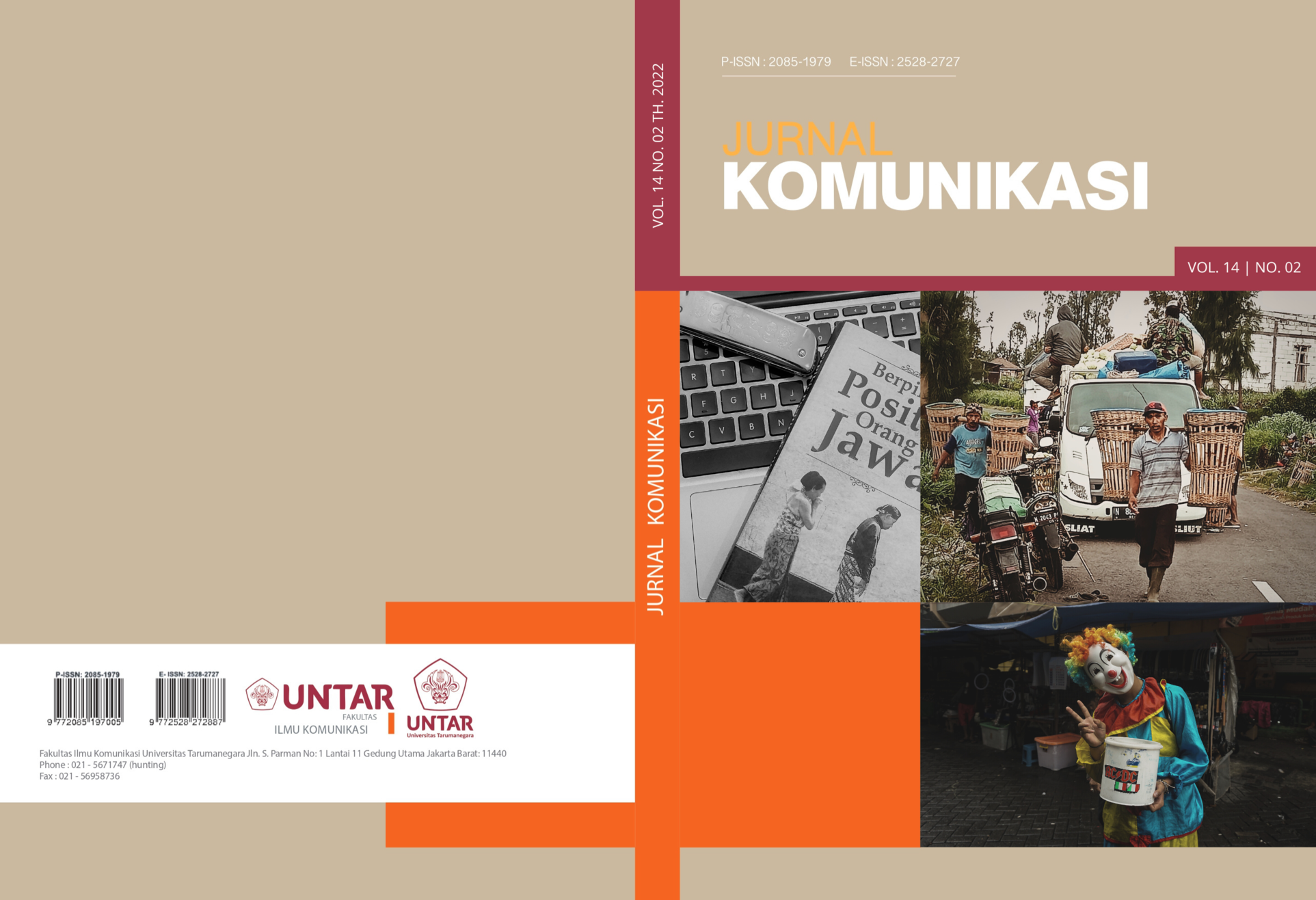Communications Experiences For Covid-19 Survivals Who Perform “Isolasi Mandiri” In Bandung
Main Article Content
Abstract
This study aims to find out: 1) Self-understanding of Covid-19 survivors; 2) Experience internal communication of Covid-19 survivors with family; 3) Experience external communication of Covid-19 survivors with environments outside the family. The method used in the research is qualitative method with phenomenological approach. The data collection technique in this study used in-depth interviews to five Covid-19 survivors who conducted self-isolation in Bandung. The theory used is the theory of symbolic interaction. The results of this study showed that the self-meaning of Covid-19 survivors who conducted self-isolation in this study was categorized as follows: a) fear; b) uncomfortable feeling and distrust others; c) feel sad to be temporarily separated from the family; d) feel bad for others; e) feel loved and cared for by others. Then the experience of internal communication of Covid-19 survivors with family, namely: a) maintaining physical distance and always using masks; b) communicate with electronic devices; c) communicate by shouting; d) communicate using the bell; e) given helpness in order to fulfill daily needs. As well as the experience of external communication of Covid-19 survivors with environments outside the family, namely: a) keeping a distance and tending to stay away physically; b) communicate with electronic devices; c) given helpness in order to meet the daily needs.
Article Details
Section

This work is licensed under a Creative Commons Attribution-ShareAlike 4.0 International License.
This work is licensed under a Jurnal Komunikasi Creative Commons Attribution-ShareAlike 4.0 International License.How to Cite
References
Bobey. (1999). Resilience: The Ability to Bounce Back from Adversity. (US): American of Pediatric at Crha-Health.
Burhan, E. (2020). Coronavirus yang Meresahkan Dunia. Jakarta (ID): IDDI Departemen Pulmonologi Dan Kedokteran Respirasi, Fakultas Kedokteran Universitas Indonesia.
Creswell, J. W., & Poth, C. N. (2018). Qualitative Inquiry & Research Design - Choosing Among Five Approaches (Fourth Edition) (4th ed., Issue 4). SAGE Publications, Inc.
Desmawarita, S., & Aryani, L. (2014). Kepercayaan mahasiswa terhadap ustadz: Pendekatan indigenous psikologi. Jurnal Psikologi, 10(2).
Gibbons, M. T. (2010). (2010). Returning to Normality: A Grounded Theory Study of Women with Breast Cancer. Doras.Dcu.Ie.
Handayani, D., Hadi, R. D., Isbaniah, F., Burhan, E., & Agustin, H. (2020). (2020). Penyakit Virus Corona 2019. Jakarta: Jurnal Respirologi Indonesia.
Kals, E., & Montada, L. (2001). Health behavior: An interlocking personal and social task. Journal of Health Psychology, 6(2), 131-148.
Kreitner, R., & Kinicki, A. (2007). Organizational Behavior. 7th.
Misbah, H. (2017). (2017). KOMUNIKASI KELUARGA UNTUK MENUMBUHKAN MOTIVASI SEMBUH PADA ANAK PENDERITA KANKER (Doctoral dissertation, Faculty of Social and Political Sciences).
Putri, A. F. (2015). Dukungan Orangtua Yang Memiliki Anak Dengan Leukimia Usia 6-12 Tahun Di RSU Kabupaten Tangerang.
Rakhmat, J. (2013). Psikologi Komunikasi. Bandung: PT. Remaja Rosda Karya.
Sugiyono. (2012). Metode Penelitian Kuantitatif Kualitatif dan R&D. Alfabeta.
Susilo, A. (2019). Coronavirus Disease 2019: Tinjauan Literatur Terkini. Jakarta: Jurnal Penyakit Dalam Indonesia.
Taylor, S., E. (2015). Health psychology ninth edition. New York: McGraw-Hill Education.

